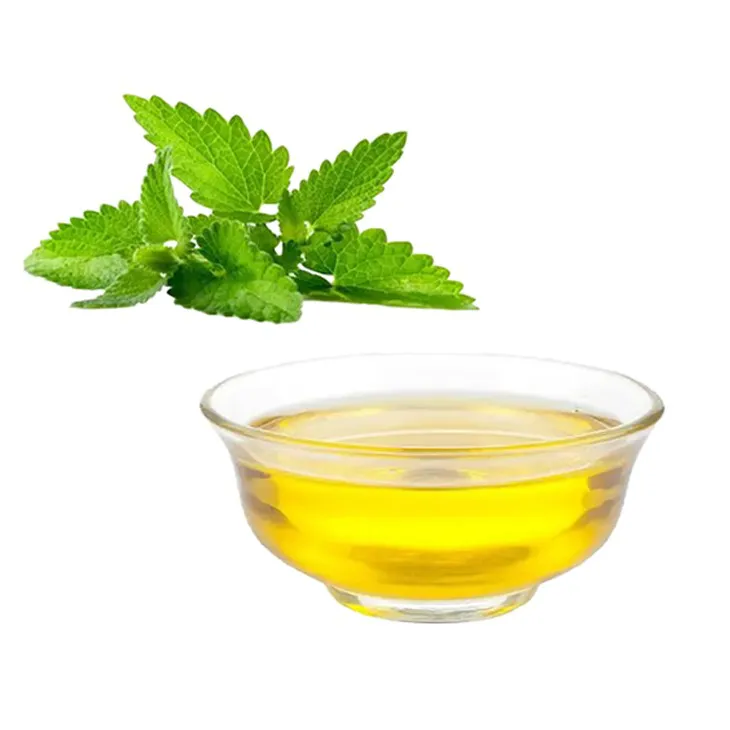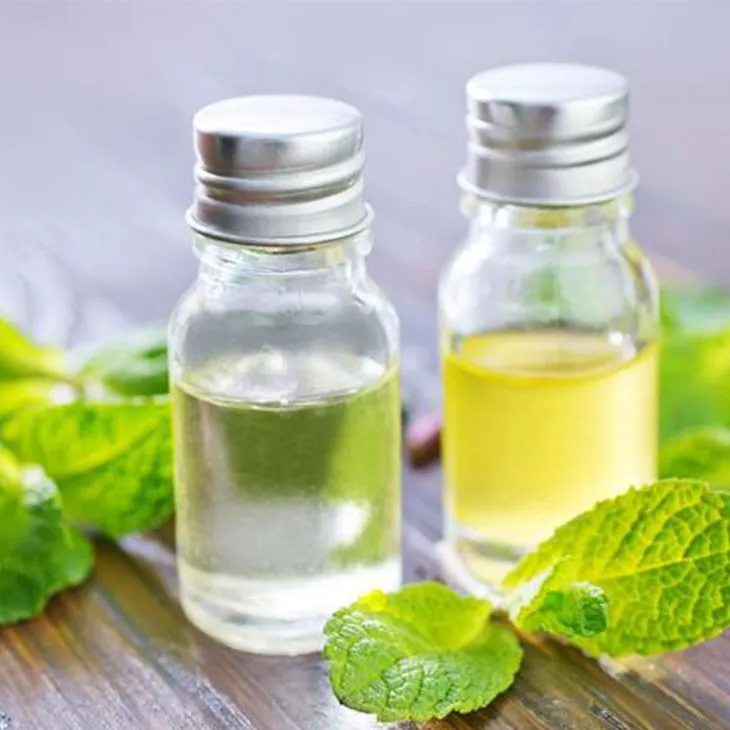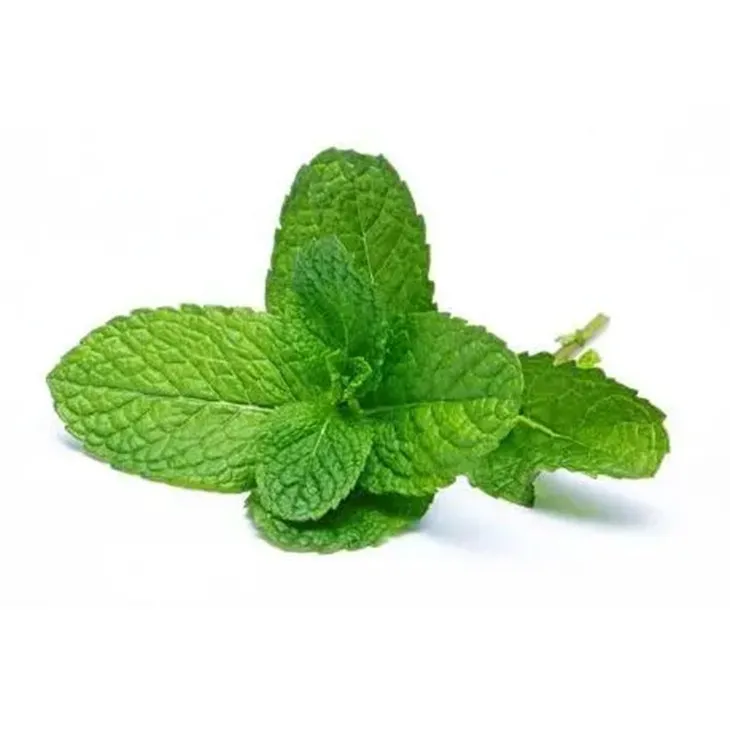- 0086-571-85302990
- sales@greenskybio.com
Peppermint Oil: From Leaves to Extraction
2024-11-12

The Source: Peppermint Leaves
Peppermint leaves are the starting point for the production of Peppermint Oil. These leaves are not only fresh and fragrant but also a rich source of various substances that are essential for the extraction of high - quality Peppermint Oil. Peppermint, scientifically known as Mentha × piperita, is a hybrid mint, a cross between watermint and spearmint. The leaves of the peppermint plant contain a complex mixture of chemical compounds, including menthol, menthone, and various esters, which are responsible for its characteristic aroma and therapeutic properties.
Peppermint plants are typically grown in well - drained soil and require a certain amount of sunlight and water. The quality of the leaves can be affected by factors such as the growing conditions, the time of harvest, and the variety of peppermint. For example, leaves harvested at the right stage of growth, usually when the plant is in full bloom, tend to have a higher concentration of the desired compounds. This is because during this period, the plant has had sufficient time to synthesize and accumulate these substances in its leaves.

Harvesting of Peppermint Leaves
The Timing of Harvest
Harvesting peppermint leaves at the correct time is crucial. As mentioned earlier, the ideal time is when the plant is in full bloom. This is usually in the summer months, depending on the geographical location. Harvesting too early may result in leaves that have not fully developed their flavor and aroma - rich compounds. On the other hand, if the harvest is delayed too long, some of the volatile compounds may start to degrade, leading to a reduction in the quality of the leaves for oil extraction.
Harvesting Techniques
There are different methods for harvesting peppermint leaves. One common approach is to cut the stems of the peppermint plants close to the ground using sharp tools such as shears. Care should be taken not to damage the surrounding plants or the roots of the peppermint plants. Another method is hand - picking, which is more labor - intensive but can be more selective. In some cases, especially in large - scale commercial operations, mechanical harvesters may be used. However, these need to be carefully calibrated to ensure that they do not overly damage the plants or leave behind too many unharvested leaves.

Pre - treatment of Peppermint Leaves
Once the peppermint leaves are harvested, they usually undergo some pre - treatment before the extraction process. This pre - treatment is important to enhance the efficiency of extraction and to ensure the quality of the final Peppermint Oil.
Washing and Cleaning
The first step in pre - treatment is often washing the leaves. This helps to remove any dirt, debris, or insects that may be present on the leaves. However, it is important to dry the leaves thoroughly after washing to prevent the growth of mold or bacteria. Washing can be done using clean water, and in some cases, a mild detergent may be used, but this needs to be carefully rinsed off to avoid any contamination of the leaves.
Drying
Drying is another crucial pre - treatment step. There are different methods of drying peppermint leaves, such as air - drying, sun - drying, and using drying machines. Air - drying is a traditional method where the leaves are spread out in a well - ventilated area. Sun - drying can be faster but requires careful monitoring to prevent over - drying or exposure to excessive heat, which can damage the leaves. Drying machines offer more control over the drying process and are often used in commercial operations. The goal of drying is to reduce the moisture content of the leaves to a suitable level, usually around 10 - 12% moisture, which is optimal for extraction.

Extraction Methods of Peppermint Oil
There are several methods for extracting peppermint oil from the pre - treated leaves, each with its own advantages and disadvantages.
Steam Distillation
Steam distillation is one of the most common methods for extracting peppermint oil. In this process, steam is passed through the dried peppermint leaves. The steam causes the volatile compounds in the leaves, including menthol and other essential oils, to vaporize. The vapor - laden steam is then condensed back into a liquid, and the resulting liquid is a mixture of water and peppermint oil. Since oil and water do not mix, the peppermint oil can be separated from the water using a separator. This method is widely used because it is relatively simple and can produce high - quality peppermint oil. However, it requires a certain amount of energy to generate the steam and may take some time depending on the quantity of leaves being processed.
Solvent Extraction
Solvent extraction involves using a solvent, such as hexane or ethanol, to dissolve the peppermint oil from the leaves. The leaves are soaked in the solvent, and the solvent - oil mixture is then separated from the solid plant material. After that, the solvent is removed, usually by evaporation, leaving behind the peppermint oil. This method can be more efficient in terms of extracting a higher yield of oil, especially for some of the less volatile compounds. However, one of the main concerns with solvent extraction is the potential for solvent residues to remain in the final product. Therefore, strict quality control measures are required to ensure that the peppermint oil is free from harmful solvent residues.
Cold - Press Extraction
Cold - press extraction, also known as expression, is mainly used for citrus fruits but can also be applied to peppermint in some cases. In this method, mechanical pressure is applied to the peppermint leaves to squeeze out the oil. This method is considered more "natural" as it does not involve the use of heat or solvents. However, it has a relatively low yield compared to steam distillation and solvent extraction, and it may not be suitable for large - scale commercial production.

Properties and Uses of Peppermint Oil
Peppermint oil has a wide range of properties and uses, which make it a valuable product in various industries.
Aromatherapy
In aromatherapy, peppermint oil is highly regarded for its refreshing and invigorating aroma. It is often used in diffusers to create a relaxing and pleasant environment. The scent of peppermint oil can help to relieve stress, improve concentration, and promote a sense of well - being. When inhaled, the volatile compounds in the peppermint oil can stimulate the olfactory receptors in the nose, which in turn send signals to the brain. These signals can have a positive impact on the nervous system, reducing feelings of anxiety and fatigue.
Food Industry
In the food industry, peppermint oil is used as a flavoring agent. It can add a refreshing minty flavor to a variety of products, such as candies, chewing gums, and beverages. The menthol content in peppermint oil gives it a cooling sensation, which is especially popular in products like mint - flavored candies and ice creams. However, the use of peppermint oil in food products is regulated to ensure that the amount used is within safe limits, as excessive consumption of menthol can have adverse effects on the body.
Personal Care Industry
Peppermint oil is also widely used in the personal care industry. It can be found in products such as toothpaste, mouthwash, shampoos, and body lotions. In toothpaste and mouthwash, it helps to freshen breath and has antibacterial properties that can contribute to oral hygiene. In hair and body care products, peppermint oil can provide a cooling and tingling sensation on the skin and scalp, which is believed to stimulate blood circulation. Additionally, it has a pleasant aroma that can enhance the overall user experience of these personal care products.
Quality Control and Standardization of Peppermint Oil
To ensure the safety and effectiveness of peppermint oil in various applications, quality control and standardization are essential.
Chemical Analysis
Chemical analysis is a crucial part of quality control. This involves analyzing the composition of peppermint oil to determine the levels of key compounds such as menthol, menthone, and esters. High - performance liquid chromatography (HPLC) and gas chromatography - mass spectrometry (GC - MS) are some of the techniques used for this analysis. By accurately measuring the chemical composition, it is possible to ensure that the peppermint oil meets the required standards for its intended use. For example, in the food industry, the amount of menthol present in peppermint oil used as a flavoring agent needs to be within a specific range to ensure both flavor and safety.
Purity and Contamination Testing
Purity testing is carried out to ensure that the peppermint oil is free from contaminants such as heavy metals, pesticides, and other impurities. Contamination can occur at various stages of production, from the growth of the peppermint plants to the extraction process. Testing for heavy metals can be done using atomic absorption spectrometry, while pesticide residues can be detected using techniques such as liquid chromatography - tandem mass spectrometry (LC - MS/MS). If any contaminants are detected above the acceptable limits, the peppermint oil is not considered suitable for use in products, especially those for human consumption or topical application.
Standardization of Quality
Standardization of peppermint oil quality involves setting specific criteria for its composition, purity, and other properties. These standards are often set by regulatory bodies or industry associations. For example, in the essential oil industry, there are standards for the minimum and maximum levels of certain compounds in peppermint oil. By adhering to these standards, manufacturers can ensure that their peppermint oil products are of consistent quality and can be safely used in different applications.
Conclusion
Peppermint oil, derived from peppermint leaves through a series of processes including harvesting, pre - treatment, and extraction, is a versatile and valuable product. Its unique properties make it suitable for use in aromatherapy, the food industry, and the personal care industry. However, to ensure its quality and safety, strict quality control and standardization measures must be implemented throughout the production process. From the growth of the peppermint plants in the fields to the final extraction of the oil, every step plays a crucial role in determining the quality of the peppermint oil that reaches the consumers.
FAQ:
What are the main substances in mint leaves for peppermint oil production?
Mint leaves contain various substances for peppermint oil production, such as menthol, menthone, and other terpenoids. These substances contribute to the characteristic smell and various properties of peppermint oil.
What are the common extraction methods for peppermint oil?
Common extraction methods for peppermint oil include steam distillation and solvent extraction. Steam distillation is widely used as it is a relatively simple and effective method that can preserve the natural properties of the oil. Solvent extraction can also be used, but it requires careful handling of solvents to ensure the purity and safety of the final product.
How does peppermint oil function in aromatherapy?
In aromatherapy, peppermint oil is known for its refreshing and invigorating properties. It can help relieve stress, improve concentration, and soothe headaches. The aroma of peppermint oil can stimulate the nervous system in a positive way, creating a sense of relaxation and well - being.
What role does peppermint oil play in the food industry?
Peppermint oil is used in the food industry as a flavoring agent. It can add a refreshing minty flavor to various products such as candies, chewing gums, and beverages. It also has antimicrobial properties that can help preserve food to some extent.
How is peppermint oil used in the personal care industry?
In the personal care industry, peppermint oil is used in products like toothpaste, shampoos, and lotions. In toothpaste, it can provide a fresh breath and has antibacterial effects. In shampoos, it can soothe the scalp and add a pleasant scent. In lotions, it may have a cooling and refreshing effect on the skin.
Related literature
- Peppermint Oil: Properties, Applications, and Extraction Techniques"
- "The Science Behind Peppermint Oil Extraction from Leaves"
- "Peppermint Oil in Aromatherapy: Evidence - Based Benefits"
- ▶ Hesperidin
- ▶ citrus bioflavonoids
- ▶ plant extract
- ▶ lycopene
- ▶ Diosmin
- ▶ Grape seed extract
- ▶ Sea buckthorn Juice Powder
- ▶ Beetroot powder
- ▶ Hops Extract
- ▶ Artichoke Extract
- ▶ Reishi mushroom extract
- ▶ Astaxanthin
- ▶ Green Tea Extract
- ▶ Curcumin Extract
- ▶ Horse Chestnut Extract
- ▶ Other Problems
- ▶ Boswellia Serrata Extract
- ▶ Resveratrol Extract
- ▶ Marigold Extract
- ▶ Grape Leaf Extract
- ▶ blog3
-
Cranberry Plants and Skin - care Products.
2024-11-12
-
Tongkat Ali Extract
2024-11-12
-
Red Wine Extract
2024-11-12
-
Plantain extract
2024-11-12
-
Green Tea Extract
2024-11-12
-
Cranberry Extract
2024-11-12
-
Genistein
2024-11-12
-
Acerola Juice Powder
2024-11-12
-
Boswellia Serrata Extract
2024-11-12
-
Europen Bilberry Extract
2024-11-12
-
Quercetin
2024-11-12





















